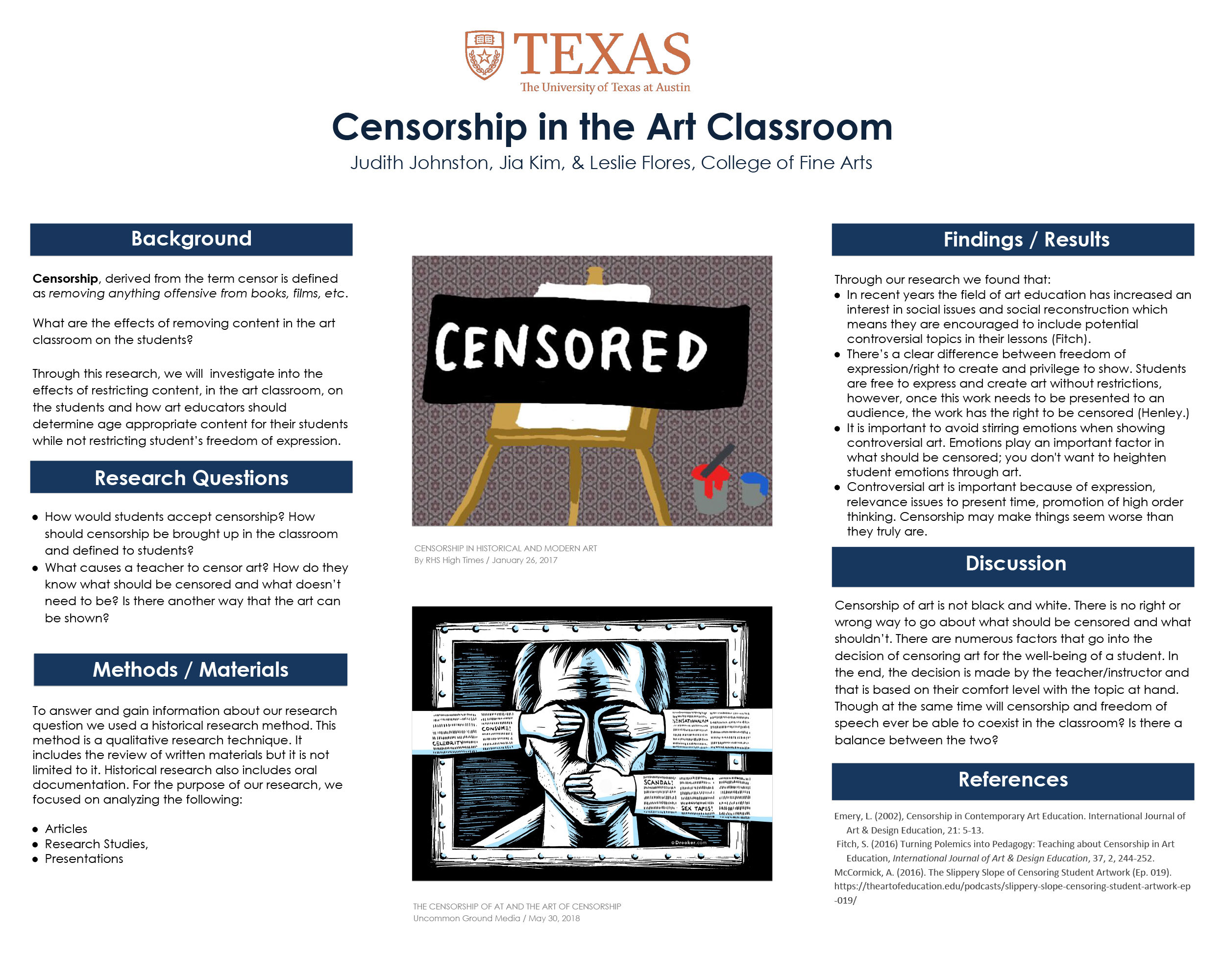Judith Johnston, Jia Kim, Leslie Flores
We will be researching censorship in the classroom specifically pertaining to art and how an educator determines what needs to be censored and its effects on freedom of expression. What defines age appropriate content and how does it conflict with freedom of expression? This is an investigation into the effects of restricting content, in the art classroom, on the students.

Comments
Good work. What lessons from this work hit home the most for you as art educators? —Rob Reichle
Interesting topic. Your poster makes me wonder about age-level of the students and how that influences censorship, particularly when it comes to art that grapples with violence or trauma. And it also makes me wonder about what trauma-informed pedagogy at the university level would have to say about this topic. What are the alternatives to censorship as a means of dealing with these questions of age-appropriateness and trauma? —Jeanette Herman
I was thinking about these kinds of questions as well. I wonder what you found in your research around the discussion of how the two ideas of freedom of speech and censorship work together in order to fuel conversation rather than stifle it—this question you posed about whether the two can co-exist? I, and probably many others, would argue that art is often meant to invoke emotion, even if that emotion isn’t a positive one; I wonder if/how you think instructors could create meaningful discussions around those negative emotions and how people react very differently to art, or if you’ve found good examples of this? For example, I took a writing class in my undergrad that used the work of Sally Mann for one of our papers, and the point wasn’t that there was one right answer, or that the answer was black and white, but rather that there were many answers and reactions to art. We had to practice expressing why artwork made us feel how we did regarding freedom of speech vs. censorship. It makes me wonder if this kind of reflective practice could help foster understanding for other perspectives of art, censorship, freedom of speech, etc. Of course, this is difficult when there is a question around trauma. Have you considered, or come across in your research, ways in which instructors can or have tried handling it (e.g. the introductions of content warnings for lessons)? —Anna Hornsby

